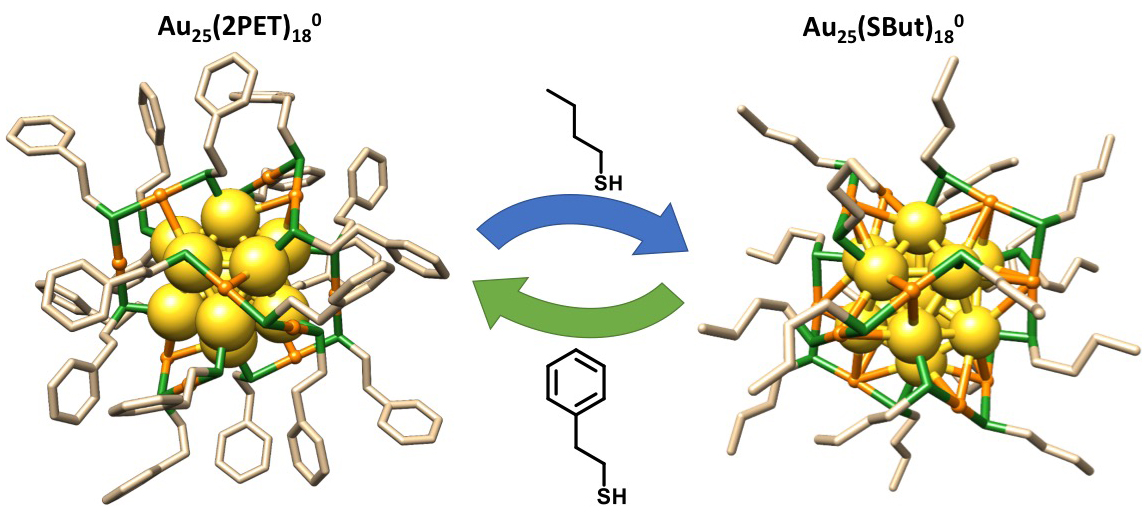1H-NMR and MALDI investigation of thiol-exchange reaction in Au25(SR)18 cluster
Small thiol protected gold nanoparticles (< 2nm), also known as gold cluster, are self-assembled systems formed by Au(0) core and a thiol protecting monolayer. The latter is fundamental not only for stabilization and solubility of the clusters themselves, but also is the principal responsible for their reactivity.[1] One of the most frequent reactions used to functionalized the monolayer are the thiol-exchange reactions.[2]. These reactions usually present difficulties in controlling the number of substitutions and the reaction time can vary from minutes to days. In this study we investigated the thiol-exchange reaction using nuclear magnetic resonance (NMR) spectroscopy and MALDI analysis.[3] Kinetic studies were performed on Au25(SC2H4Ph)18 exchange with butane thiol and vice versa (Au25(SButane)18 exchange with HSC2H4Ph, Figure 1). By these studies, were possible to understand: 1) the affinity of different thiol ligands towards the Au25 cluster, 2) calculating the number of thiols exchange, 3) the position of exchange and 4) obtaining the relative binding constants. From this information was possible to gain a clearer picture on the mechanism of this reaction that can help in fine-tuning the functionality of the monolayer.

[1] H. Häkkinen, Nat. Chem., 2012, 4, 443–55.
[2] T. Ni, M. Tofanelli, B. Philips, C. J. Ackerson, Inorg. Chem., 2014, 53, 6500–6502.
[3] P. Pengo, C. Bazzo, M. Boccalon, L. Pasquato, Chem. Commun., 2015, 51, 3204–3207.